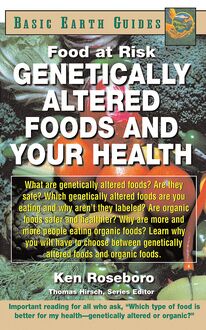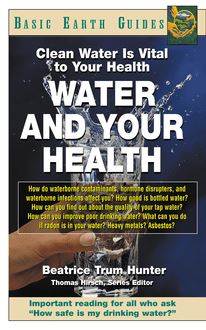-
 Univers
Univers
-
 Ebooks
Ebooks
-
 Livres audio
Livres audio
-
 Presse
Presse
-
 Podcasts
Podcasts
-
 BD
BD
-
 Documents
Documents
-
- Cours
- Révisions
- Ressources pédagogiques
- Sciences de l’éducation
- Manuels scolaires
- Langues
- Travaux de classe
- Annales de BEP
- Etudes supérieures
- Maternelle et primaire
- Fiches de lecture
- Orientation scolaire
- Méthodologie
- Corrigés de devoir
- Annales d’examens et concours
- Annales du bac
- Annales du brevet
- Rapports de stage
La lecture à portée de main
Vous pourrez modifier la taille du texte de cet ouvrage
Découvre YouScribe en t'inscrivant gratuitement
Je m'inscrisDécouvre YouScribe en t'inscrivant gratuitement
Je m'inscrisEn savoir plus
Vous pourrez modifier la taille du texte de cet ouvrage
En savoir plus

Description
Sujets
Informations
| Publié par | Turner Publishing Company |
| Date de parution | 01 janvier 2004 |
| Nombre de lectures | 0 |
| EAN13 | 9781591206569 |
| Langue | English |
Informations légales : prix de location à la page 0,0300€. Cette information est donnée uniquement à titre indicatif conformément à la législation en vigueur.
Extrait
The information contained in this book is based upon the research and personal and professional experiences of the author. It is not intended as a substitute for consulting with your physician or other healthcare provider. Any attempt to diagnose and treat an illness should be done under the direction of a healthcare professional.
The publisher does not advocate the use of any particular healthcare protocol but believes the information in this book should be available to the public. The publisher and author are not responsible for any adverse effects or consequences resulting from the use of the suggestions, preparations, or procedures discussed in this book. Should the reader have any questions concerning the appropriateness of any procedures or preparations mentioned, the author and the publisher strongly suggest consulting a professional healthcare advisor.
Basic Health Publications, Inc.
8200 Boulevard East • North Bergen, NJ 07047 1-800-575-8890
Editor: Cheryl Hirsch • Typesetter: Gary A. Rosenberg
Series Cover Designer: Mike Stromberg
Library of Congress Cataloging-in-Publication Data
Hunter, Beatrice Trum.
Food and your health / Beatrice Trum Hunter.
p. cm.
Includes bibliographical references and index.
ISBN 13: 978-1-59120-656-9
ISBN 1-59120-032-6
1. Nutrition. 2. Health. 3. Food. I. Title.
RA784.H795 2003
613.2—dc21
2003007766
Copyright © 2003 by Beatrice Trum Hunter
All rights reserved. No part of this publication may be reproduced, stored in a retrieval system, or transmitted, in any form or by any means, electronic, mechanical, photocopying, recording, or otherwise, without the prior written consent of the copyright owner.
Printed in the United States of America
10 9 8 7 6 5 4 3 2 1
C ONTENTS
Preface
1. Diet and Health: Making Wise Food Choices
2. Special Food and Health Concerns throughout Life
3. Form and Function: The Body Knows Best
4. Basic Foods and Beverages with “New and Improved” Uses
5. Sugar: Desired but Undesirable
6. Fats and Oils: What You Should Know
7. Dispelling Some Popular Health Myths
8. Food Additives and Your Health
9. Avoiding Foodborne Illnesses
10. Contaminants in Our Food
11. Agricultural Practices That Affect Our Food and Health
About the Author
Dedicated to the memory of Nathan and An Keats, and F.J. Schlink
P REFACE
Since the inception of Consumers’ Research Magazine in 1928, its readers have been given reliable and useful information regarding the subjects of food and nutrition, and their relationship to health. These important topics are discussed in each issue, along with other topics affecting consumers.
Characteristically, much of the food and nutrition information has been given far in advance of official concern or public awareness. For example, the problems of the food-borne illness inflicted by E. coli 0157:H7 were discussed in May 1991—several years prior to the publicized incident in a fast food restaurant that affected many children. Information on the now-banned pesticide, Alar, was printed as early as November 1985, and the value of homocysteine as a bio-marker for health problems, as early as May 1996. Readers had been warned about the dangers of pesticide residues in foods decades before the publication of Silent Spring, and had been alerted to the problems of heavy metal poisonings from lead, cadmium, and mercury, many years prior to official acknowledgments that these substances were public health problems. Consumers’ Research Magazine was in the forefront in exposures of blatant advertisements and nutritional shortcomings of many highly sugared breakfast cereals, long before congressional hearings were called on this subject.
In selecting articles for the present series, it was apparent that some of the topics are still in advance of official policy or public understanding. For example, “The Downside of Soy” offers information contrary to mainstream claims. In the future, however, the minority view expressed will be validated and acknowledged by health professionals and understood by the general public.
From the beginning, Consumers’ Research has attempted to make consumers aware of the importance of making wise choices, on the basis of sound information. Also, the organization has pointed out the problems, pitfalls, and need for appropriate actions by official agencies making public policy:
“. . . let your voice be heard loudly and often, in protest against the indifference, ignorance, and avarice responsible for the uncontrolled adulteration and misrepresentation of foods, drugs, and cosmetics. In this adulteration and misrepresentation lurks a menace to your health that ought no longer be tolerated.’’
Lest the reader think that this advice came out of the burgeoning consumer movement of the 1960s, and 1970s, be assured that it was written far earlier. It appeared in 1933, in 100,000,000 Guinea Pigs (Vanguard Press), co-authored by F.J. [Frederick John] Schlink, founder and president of Consumers’ Research, Inc. and publisher of Consumers’ Research Magazine. This best-selling book exposed the dangers in everyday foods, drugs, and cosmetics. The book was based on information from the extensive files of the organization. The work shocked many individuals into an awareness of many hazards in consumer goods, and was an important influence leading to congressional hearings and strengthening of federal and state regulations for food, drug, and cosmetic safety.
The files of Consumers’ Research continued to be utilized for programs of public enlightenment, with the issuance of both periodicals and books. In 1934, Skin Deep (Vanguard Press) exposed dangerous substances used in cosmetics. The book was written by a staff member, M.C. Phillips (Mary Catherine Phillips, wife of F.J. Schlink). Eat, Drink, and Be Wary (Covici, Friede, Inc.), by F.J. Schlink, published in 1935, was another hard-hitting exposé of what was happening to the food supply.
Consumers’ Research, Inc. is a unique organization. It has been in the forefront of the consumer movement. Its sole purpose remains to serve the ultimate consumer. Its various activities center around the needs of its subscribers, to whom it dedicates its facilities, special knowledge, and skills. The organization accepts no commercial advertisements, nor contributions from industry, manufacturers, and dealers. Nor does it receive any funding from governmental sources. It is a non-profit organization.
Consumers’ Research offered to its readership in 1971 a philosophy of lasting value:
“The right choice of specific foods and types of foods, makes, for millions of persons, the difference between health and vigor on the one hand, and a lack of energy and resistance to disease on the other. A good diet is not merely a matter of having money to spend. Deficient nutrition is common among people who can buy whatever foods they choose, but make the wrong choices, for lack of knowledge. Like millions of teenagers, these people tend to ‘follow the crowd’ to hot dogs, French fries, cakes, candy, soft drinks, and ice cream, unaware of what they are missing.
“The path to good eating and good health is not an easy or simple one . . . Partly, this is because of the abundance of choices available under modern industry’s efficiency in manufacture and distribution. Partly, it is because tradition no longer plays an important part in choices of basic foods for the table.”
Chapter 1
D IET AND H EALTH: M AKING W ISE F OOD C HOICES
AMERICANS’ EATING HABITS: POOR, AND GETTING POORER
“In America, today, poor diets are typically too high in calories and fats, and too low in fruits and vegetables—problems associated with certain chronic diseases and obesity.”
These words, in the introductory remarks of a report issued by the U.S. Department of Agriculture’s (USDA) Economic Research Service (ERS), depict (long-term) changes in American eating habits, and the consequences resulting from the changes. The report is one in a series of several critical reports issued by ERS on the status of the current American diet, and the implications. Other reports focus on the growing trend of eating away from home, and its impact on the decline of quality in the American diet; the current diet of American children; and an assessment of actual food consumption by Americans, compared with official recommendations.
These reports, examined in toto, confirm and give added weight to concerns already expressed by many nutritionists, dietitians, health practitioners, and public health officials. All groups have reported findings, based on clinical studies, that current American eating habits are poor, and apt to get poorer, due to changes in eating patterns.
The reports serve as a wake-up call. They deserve study and discussion. These are some of the highlights:
“More Americans than ever are overweight, fiber consumption is low, and snack foods are as popular as ever. . . . Americans are eating more and exercising less. . . . Consumers eat three meals a day, quench their thirst with carbonated beverages, and constantly nibble on snacks. Is it any wonder that by the end of the day few of us know how many calories we have ingested, let alone our fat intake? . . . Clearly, counting grams of fat is more difficult for food purchased from the local hamburger joint, a sidewalk vendor, or a supermarket deli [than from home-prepared foods] . . .”
Eating Away from Home. The frequency of eating away from home rose by more than two-thirds over two decades, from 16 percent of all meals and snacks in 1977–78 to 27 percent by 1995 (the latest year examined in the report). It is anticipated that the trend will continue. Regarding the health consequences of this trend, ERS found that foods prepared and eaten at home generally contain less fat and less saturated fat, but more fiber, calcium, and iron, than foods eaten away from home. The report notes that, in recent years, the nutritional content of foods e
-
 Univers
Univers
-
 Ebooks
Ebooks
-
 Livres audio
Livres audio
-
 Presse
Presse
-
 Podcasts
Podcasts
-
 BD
BD
-
 Documents
Documents
-
Jeunesse
-
Littérature
-
Ressources professionnelles
-
Santé et bien-être
-
Savoirs
-
Education
-
Loisirs et hobbies
-
Art, musique et cinéma
-
Actualité et débat de société
-
Jeunesse
-
Littérature
-
Ressources professionnelles
-
Santé et bien-être
-
Savoirs
-
Education
-
Loisirs et hobbies
-
Art, musique et cinéma
-
Actualité et débat de société
-
Actualités
-
Lifestyle
-
Presse jeunesse
-
Presse professionnelle
-
Pratique
-
Presse sportive
-
Presse internationale
-
Culture & Médias
-
Action et Aventures
-
Science-fiction et Fantasy
-
Société
-
Jeunesse
-
Littérature
-
Ressources professionnelles
-
Santé et bien-être
-
Savoirs
-
Education
-
Loisirs et hobbies
-
Art, musique et cinéma
-
Actualité et débat de société
- Cours
- Révisions
- Ressources pédagogiques
- Sciences de l’éducation
- Manuels scolaires
- Langues
- Travaux de classe
- Annales de BEP
- Etudes supérieures
- Maternelle et primaire
- Fiches de lecture
- Orientation scolaire
- Méthodologie
- Corrigés de devoir
- Annales d’examens et concours
- Annales du bac
- Annales du brevet
- Rapports de stage







